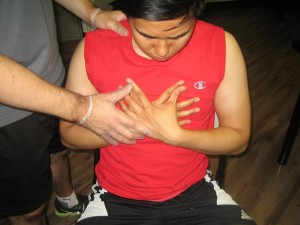A collapsed lung occurs once air enters the pleural space amidst the chest well and lungs from injury or disease. It is important to note that the pleura is a double-layered membrane surrounding the lungs as well as the interior chest wall.
Once the injury occurs, it requires medical care. In case the collapse is minor, the doctor might allow it to settle on its own without any treatment. If due to chest injuries or there is full collapse, it can be dangerous and necessitates immediate medical care.
Close look on the injury

Both the lungs as well as the chest wall are elastic in nature and pull in opposing directions which results to a delicate balance of conflicting pressures amidst the pleural sheaths.
The balance allows the lungs to inflate. If air moves into the pleural space, it disrupts this balance amidst the pleural membranes and the stability of pressure becomes irregular. Once this occurs, the lung collapses inward and the chest wall springs exteriorly. A rupture often arises at the upper part of the lung but might arise occasionally once there is a weakened area in the pleura.
Aspiration
The treatment for a collapsed lung is based on the amount of air in the chest, seriousness of the collapse and if a disease is present.
A minor case might not necessitate treatment. The doctor will treat other cases by releasing the air using a needle and syringe known as aspiration. If a small injury occurs, the doctor will introduce an irritant that results to inflammation where the 2 pleural membranes fuse as they recuperate.
Chest tube placement
For a large case of a collapsed lung, the doctor will drain using a chest tube and water seal bottle. A local anesthetic is given before the doctor will create a small-sized incision in the site of the collapse.
A tube is inserted via the chest wall into the pleural space. The tube is connected to a device known as a water seal bottle that enables air in the chest to travel into the bottle but stops air in the room from moving into the pleural space. The balance in the pressure produced in the pleural space allows re-inflation of the lung.
Surgery
In case a collapsed lung does not settle on its own or with minor intervention, surgery might be an option.
During the procedure, the surgeon scrapes the pleural surface to promote scar formation which causes the 2 pleural layers to adhere. Another surgical procedure involves the removal of the site of the lung that has ruptured.
Disclaimer / More Information
The information posted on this page on a collapsed lung is for learning and educational purposes only. To learn how to properly manage the injury, register for first aid training at one of our training centers located throughout Canada. The training centers are in Edmonton, Calgary, Vancouver, Kelowna, Saskatoon, Victoria, Surrey, Mississauga, Winnipeg, Red Deer, Toronto, Ottawa and Halifax.
